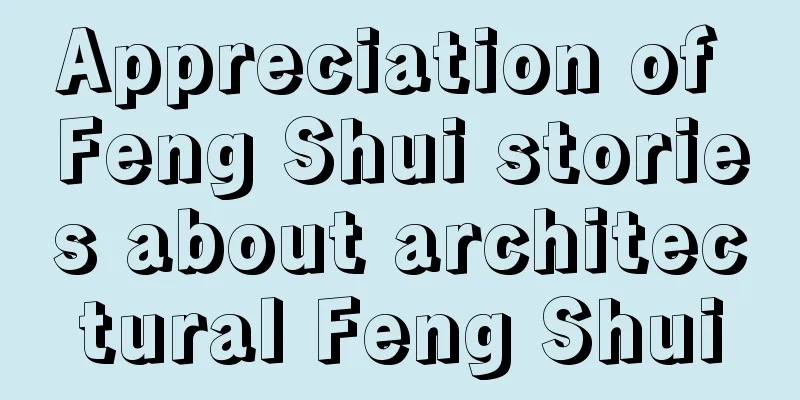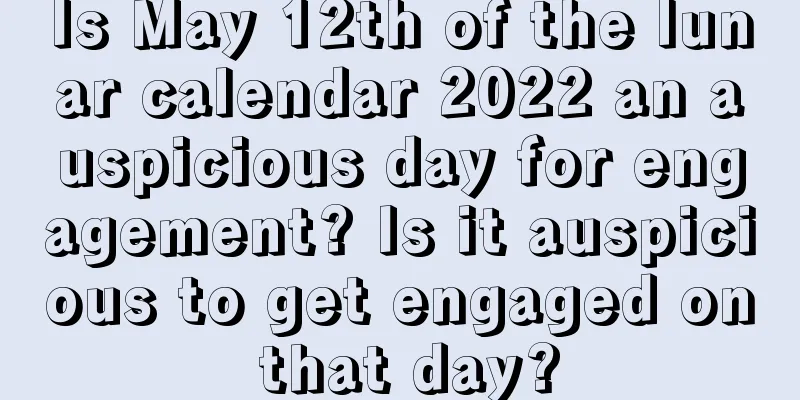|
Introduction: Feng Shui has become more and more popular nowadays, and its influence is becoming more and more widespread. Feng Shui exists in all aspects of life. Among them, architectural Feng Shui is the most widely used Feng Shui. There are many Feng Shui stories widely circulated about architectural Feng Shui. Next, the editor will give you a detailed introduction! It is difficult to tell the true from the false in folk Feng Shui stories. Let’s take a look at the following Feng Shui story. Design Bank of China Tower For I.M. Pei, this was an opportunity to continue his father's glory, but he faced various challenges of limitations in the process. In 1982, I.M. Pei, who was already a world-renowned architect, accepted the invitation from Bank of China (Hong Kong) to design the Bank of China Tower. I.M. Pei put a special feeling into this business. In 1918, I.M. Pei's father, Pei Zuyi, founded the Hong Kong branch of the Bank of China. Now, designing the Bank of China Tower is an opportunity for him to continue his father's glory. Hong Kong, like I.M. Pei who grew up in Hong Kong, is a mixture of Eastern and Western cultures.
"I stayed in Hong Kong when I was a child, and it is very different from today. In fact, what I miss most is the aroma of coffee beans. Sixty or seventy years ago, I especially liked to walk down the mountain to school and smell the coffee. When I was young, I often went to the Bank of China to play. I still remember the old Bank of China. I used to go there when I was a child. There was an Indian standing in front of the door with a big gun. Now it has been changed. The situation now is very different from before." I.M. Pei recalled his life in Hong Kong and the old Bank of China Hong Kong Branch Building.
Regarding designing the new Bank of China Hong Kong Headquarters, Pei said: "I must say that I am proud of it. This is a great event in my life."
His previous work in mainland China was the Beijing Xiangshan Hotel. When designing the Xiangshan Hotel, I.M. Pei was given power that was rare for a designer: not only was he able to decide the location of the building, but he also proposed to transport 230 tons of pointed columnar rocks from the Yunnan Stone Forest across most of China to Xiangshan just to add some style to a small concrete square in the hotel. In order to pursue a certain color and a certain diameter, the pebbles for paving the courtyard were also transported a long distance from Shandong, although there were pebbles in Beijing as well.
But when designing the Bank of China Tower, I.M. Pei faced various challenges of limitations. The first is what Huang Shaoming said about the bad location. The land area is small and the elevated highway frames it on three sides. To make matters worse, the land was once occupied by the Japanese military headquarters during World War II. Many Hong Kong people believe that the ghosts of the tortured prisoners still linger in the area, which posed an additional challenge to Pei's design. After the design was completed, the Bank of China Tower also attracted controversy due to "feng shui" issues.
Unlike the lavish Xiangshan Hotel, the Bank of China Tower only had a budget of US$130 million. Not far away, the HSBC headquarters building, with a budget of $1 billion, has gained a reputation for Hong Kong architecture that I.M. Pei must surpass.
Pei promised: "The Western style of the bank building will be no less impressive than any other building. Hong Kong is the crossroads of the world. It has the technology and means to build a modern building."
Due to the background of Hong Kong's return, the Bank of China Tower is given special meaning. The Bank of China Tower is more than just a building. It is a symbol of the Bank of China's prominent position in the world banking community. It not only dwarfs other iconic buildings in the old colony, but also symbolizes Hong Kong's bright future prospects. Pei said it represented "the ambition of the Chinese people."
Carefully conceived buildings In Hong Kong, a small piece of land, high-rise buildings are lined up one after another and densely packed with skyscrapers. To attract attention in this concrete jungle, the buildings need to be incredibly tall. Pei was not a fan of tall buildings, especially after he had just completed the Xiangshan Hotel in Beijing. It was a 180-degree turn, he admitted.
In traditional high-rise buildings, the weight of the building increases as the number of floors increases. The taller the building, the thicker the columns. In Hong Kong, which is frequently hit by typhoons, the standard for horizontal tie bars used to support the weight of buildings is twice that of other places. "An architect who was not as bold and innovative as I.M. Pei might have been satisfied with building a standard 50-story box-type building when faced with this additional burden and insufficient budget," said Michael Cannell, author of "I.M. Pei: A Biography."
But because of the special meaning of the building, I.M. Pei tried every architectural possibility.
After long contemplation, "I.M. Pei asked his son Shandi to cut a square wooden pole longitudinally to make four triangular fan-shaped columns, then cut the top into an inclined plane and tied the columns together with rubber bands. When Pei slid the columns apart from each other, a tower-like structure with gradually shrinking volume and steps appeared at a quarter of the height of the columns; the second and third towers appeared at half and three-quarters of the height respectively. The remaining column continued to rise to form a pyramid-like apex." Michael Cannell described the formation of the conception of the Bank of China Tower in this way.
I.M. Pei also made bold attempts in engineering design. The highest spine of the building distributes the weight of the entire building to the four corners. Every time the spine reaches an intersection, it disperses the weight to the surrounding columns. By directing gravity to the outside, the steel that was originally used for repeated horizontal reinforcement can now be used vertically, and the entire structure does not need any internal support. I.M. Pei said that because of the use of triangles, the weight of the steel bars was reduced by almost half, saving a lot of money.
To emphasize that what was structurally feasible was also aesthetically feasible, Pei circled in red the diagonal members and transverse trusses that reinforced the tower every 13 floors. Pei said: "If we don't show the structure, the building will not look comfortable."
The construction of the Bank of China Tower began in 1985, and grew at a rate of one floor added every four days. It was completed in 1989 and officially opened on May 17, 1990. This building, which was the tallest in Hong Kong at that time, was composed of the simplest lines. The bottom ten floors of the building were nearly square, and then the upward and outward side extended diagonally upward, while the other two sides narrowed towards the center and merged with the upward extending side. After more than ten floors, the two wings that were originally narrowing inwards both narrowed diagonally upward, thus making the top ten floors return to a smaller square architectural form. Then above that is a several-story double-column long-pole building that serves multiple functions such as decoration, communication, and lightning protection.
Its exterior lines are simple and clear, with smooth light ink-colored and slightly silver-white reflective glass walls, and smooth and wide silver-white metal sheets inlaid in the four corners of the building. A large slanted silver-white cross is marked in the middle of each face. It is anti-traditional, anti-luxury, and anti-cumbersome, and has the most modern feel, becoming the new symbol of Hong Kong.
On August 8, 1988, the Bank of China Tower held a topping-out ceremony. This was a carefully selected day, and was even considered by Hong Kong people to be the most auspicious day in the 20th century, showing the respect of the building's designers, builders and owners for traditional folk culture. Because "8", as Chinese people now know, is homophonic with the "fa" (get rich) in Cantonese. Feng Shui Controversy I.M. Pei poetically compared the Bank of China Tower to hopeful bamboo shoots, but in the eyes of Hong Kong Feng Shui masters, the building is a sharp knife with a triangular blade, shining with cold light. They say it is "three-pointed and eight-angled" and has a lot of ominous energy. The blade pointed at HSBC on one side and the Governor's Office on the other. Later, HSBC mounted four cannons on the roof of its building, and six willow trees were planted in the Governor's House.
According to the biography of I.M. Pei, during the design process of the technical drawings, the bank sent a telegram to Pei expressing its concern about the many giant framed "X"s on the front of the building. Because in China, "X" means disaster. Although senior bank officials do not necessarily believe in feng shui, they are worried that if the building has bad feng shui, it will affect the enthusiasm of depositors and tenants.
The issue of the Bank of China Tower having "bad feng shui" was widely reported in newspapers and magazines, and for a time, the Bank of China Tower received a lot of negative reviews. Shortly after the news about the "bad feng shui" of the Bank of China Tower was widely reported in Hong Kong newspapers, I.M. Pei and his wife happened to meet Governor Wilson and his wife on a flight from Paris to Hong Kong. The Governor and his wife invited I.M. Pei and his wife to visit the Governor's Mansion the next day, and showed I.M. Pei the newly planted willow trees in the Governor's Mansion garden.
Wilson later explained: "Since the Governor's House represents the Hong Kong government in the eyes of many people, we planted two willow trees on the straight line between the sharp corner and the center of the Governor's House as a protective measure. The willow trees have a soft and rounded shape, which buffers the sharp angles of the building. In this way, the problem was solved and everyone was happy."
Pei later concealed the transverse trusses that separated the floors and described the exposed parts as a series of intersecting jewels. At the same time, he compared the towers to bamboo shoots that have sprung up after rain, representing the power of thriving growth. “There’s an old Chinese proverb about the lotus flower emerging from the mud without getting stained. We wanted the building to have the same credentials as the lotus flower,” he said.
Since it is a lotus, there must be water. There is water flowing down on both sides of the tall buildings. I.M. Pei said that this water is the source, the source of wealth, so the water flows down to form a pond, and fish are raised in the pond. The Chinese believe that this is storing wealth. I.M. Pei sincerely hopes that the future development of Bank of China will be smooth.
The lobby on the first floor of the building is designed to be like a tomb dome. People who work in the building believe that this place used to be a cemetery, and this design is to appease the lonely souls.
In this regard, Ieoh Ming Pei later said something in an interview with the media, which may be regarded as a response to the heavy feng shui of the Bank of China Building: "I don't believe it. The machine gun was early, it was earlier than us. HSBC was five or six years earlier than us. It had it a long time ago. This machine gun was not aimed at us. I don't believe what the person next to me said. He was washing windows and there was something hanging, so it was like this. I didn't pay any attention to it. Many public opinions believe that he hit us and we hit him back. This is not the case. It is because of feng shui, not because of the lighting. He said that this house is so sharp, like a big knife, the only way is to use a reflector. For example, Mr. Wilson, the Governor of Hong Kong, used another method. He lived next to us, so what method did he use? He planted a willow tree, using softness to overcome hardness. In the end, the willow tree died, so this is all superstition."
I.M. Pei said that Feng Shui is big business in Hong Kong, and Feng Shui masters are like lawyers, they are everywhere. "You have to consult them about everything you do. I know I'm in trouble, but I don't know what kind of trouble it will be." Hong Kong Landmarks The Bank of China Tower is one of the five buildings on the Hong Kong Police badge.
In 1995, Huang Shaoming returned from studying abroad and came to work at Bank of China (Hong Kong). He had known about the Bank of China Tower for a long time, and knew its unique image and the legend of its designer, I.M. Pei. There was nothing to do in his first week at work. The company asked him to familiarize himself with the environment, so Huang Shaoming made studying the Bank of China Building his first job.
"At that time, I was very eager to learn more about the Bank of China Tower," said Huang Shaoming. He is so familiar with the structure of the building that it has, in fact, become his home.
Over the past decade, he has changed his office once, and the work is the same day after day, but Huang Shaoming has fallen in love with this place. He goes to work at 9 o'clock every day and goes home at 7 or 8 o'clock in the evening. He has three meals a day in the building. "This is also what attracts me to Bank of China," said Huang Shaoming.
Today, the top four floors and the 19th floor at the base of this building are used as offices of Bank of China (Hong Kong), while the other floors are rented out. There are more than a hundred companies of all sizes working here. The building is owned by Bank of China (Hong Kong), with the third floor being the business hall, the seventeenth floor being the restaurant and banquet hall for senior staff, and the rest being bank offices. There is a small observation deck on the 43rd floor open to the public, while the "Seventh Floor Hall" on the top floor 70th floor is the main viewing deck, but it can only be visited by appointment.
"On the Hong Kong police badge, the Bank of China Tower is one of the five buildings." Huang Shaoming is always clear about things related to the Bank of China Tower, and the logo of the Bank of China Tower is also used on various versions of the Hong Kong dollar thousand-dollar bill. Many stamps and postcards issued in Hong Kong often feature the Bank of China Tower as one of the views.
When national leaders visit Hong Kong, they often include a visit to the Bank of China Tower as part of their trip. Huang Shaoming remembers the leaders who visited the building: Hu, Jiang, Zhu Rongji, etc. He only learned about these activities afterwards. When the leaders visited, he worked as usual and did not feel there was anything special.
Celebrities from all walks of life also consider visiting the Bank of China Tower as part of their trip to Hong Kong. On September 29, 2005, Li Ao climbed to the 70th floor of the Bank of China and wrote the words "It is rare to climb to this level at the age of 70".
Urban planners and designers believe that the difference between landmark buildings and ordinary buildings is that landmarks should be the architectural protagonists in the city. It carries not only the cultural connotation of the building itself, but also the cultural temperament of the city. The "identity" of a landmark building complex has dual meanings of visual value and symbolic value. Explicit identification is directly expressed through visible appearances such as shape, color, scale and surrounding terrain, while implicit identification is expressed through invisible symbolic meanings, such as its impact on society, culture, economy and other aspects.
The Bank of China Tower in Hong Kong is such a city landmark. Summary: The above article content is the little story that the editor wants to tell you about architectural Feng Shui. From it we can see the influence of Feng Shui on people. Applying Feng Shui well will achieve unexpected results! |










